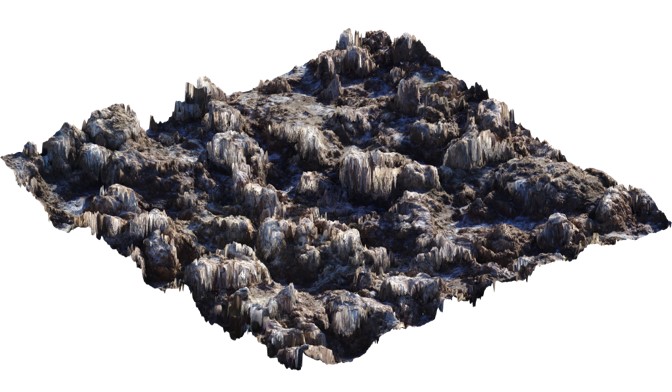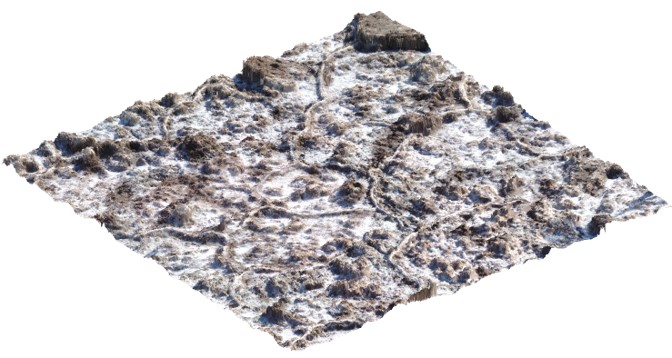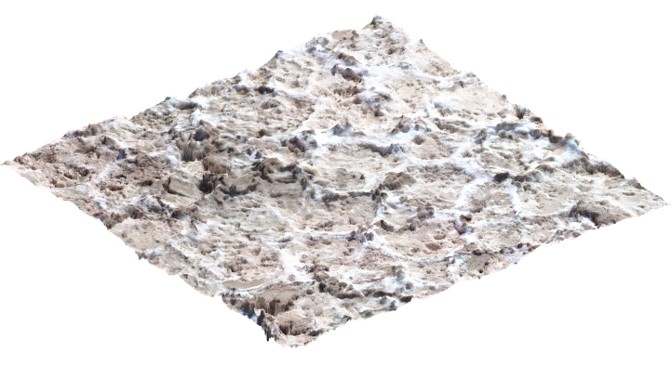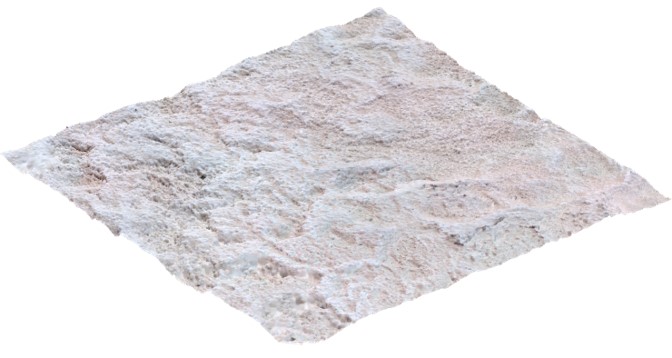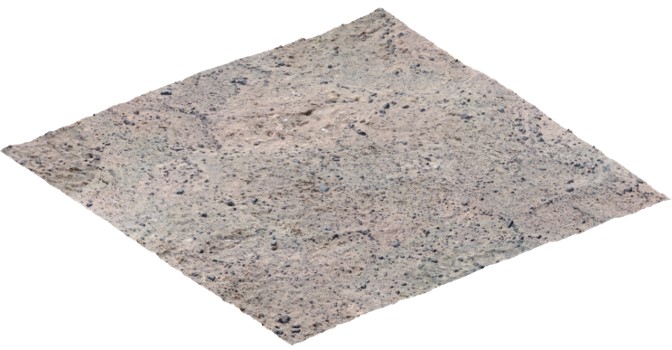

Summary
We present an analog dataset that provides examples of possible
terrain features, geometry, and appearance at the 1-10cm scale on
ocean worlds/icy moons such as Europa, Enceladus, and Pluto. The
motivation for collecting this dataset was a lack of available
high-resolution digital models suitable for development of surface
missions to these bodies (circa 2019), including use for simulation of
mechanics, sampling, and imaging. We took advantage of NASA field
opportunities to Death Valley, California and the Atacama Desert,
Chile in order to observe and record analog sites.
Data was collected at the Devil's Golf Course site in Death Valley and
the Yungay site in the Atacama Desert. Areas of interest were
preselected from satellite views with final terrain selections made in
person. A high-resolution laser scanner (with built-in color camera)
was used to survey each area with a multi-view scan pattern to
minimize occlusions. The highest resolution centroid of each survey's
point cloud was then cropped to create 5m x 5m digital elevation
models (DEMs) of terrain at 2.5mm resolution. A total of 11 scenes
were collected across 4 unique sites. Patches collected span a range
of salt, soil, and rock feature distributions.

Keywords: Dataset, ocean world, icy moon, 3D, LIDAR,
DEM, point cloud, terrain, lander, Europa, simulation, robotics
Changelog:
Dec 11, 2019 - Come see our poster/abstract at AGU!
Dec 01, 2019 - Initial Release
Attribution
The FROST Dataset was produced through the work of the OceanWATERS
simulation team in the
Intelligent Systems Division at
the NASA Ames Research Center.
Citation:
Uland Wong, Orkan Umurhan, Antoine Tardy, Terry Welsh, Mark Allan,
Larry Edwards.
FROST Dataset: Features Relevant to Ocean Worlds Surface
Terrain. NASA Ames Research Center, Dec 2019.
Acknowledgements
This work was funded by the Planetary Exploration Science and
Technology Office in the NASA Science Mission Directorate as a part of
the development of the OceanWATERS simulator.
We would also like to thank Thomas Stucky and the rest of the OW team
for advice and support.
Support and Documentation
|
Download the complete dataset documentation [.pdf].
|
Each terrain contains a DEM (TIFF format), a registered orthographic
color image (PNG format), and the raw point cloud (Matlab mat file). The
DEMs and orthoimages are at 2048 x 2048 pixel resolution covering a 5m x
5m area, giving a spatial resolution of 2.5mm between postings. This
resolution was chosen because it is a convenient value that is similar
to the LIDAR's intrinsic range error (3mm). We provide the point clouds
due to the known limitations of orthographic projection in creating a
2.5D DEM from a 3D point cloud, such as artifacts from overhangs and
occlusions. You can use this point cloud to create your own 3D voxel or
mesh representation, for example.
For questions about the dataset, contact: Dr. Uland Wong <uland
dot wong at nasa
dot gov> or Dr. Orkan Umurhan <orkan
dot m dot umurhan
at nasa dot gov>.
Primary Dataset
|
Download the entire dataset with one link [.zip, 17.8 GB], or download individual parts below.
|
Death Valley Location 1 - "Parking Lot"
|
Terrain D1A
|
Terrain D1B
|
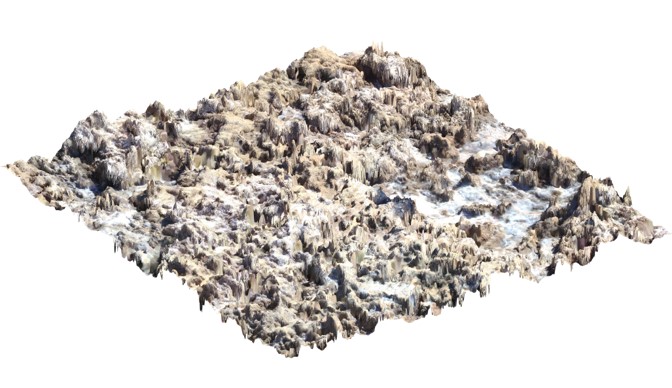
|
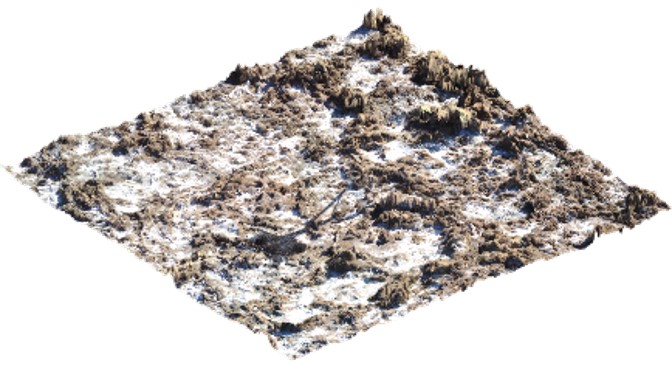
|
|
Description: Satellite view of this location indicates
a surface supporting three different color textures. Within
this broad marker we selected two regions, “Terrain D1A” and
“Terrain D1B”, the former of which is representative of the
grey colored terrain of the larger (10 km2) surrounding
region. Terrain D1B was chosen due to its relatively darkened
surface color compared to A. Note both locations are on the
valley floor (-85m).
Download: 709 MB [.zip]
|


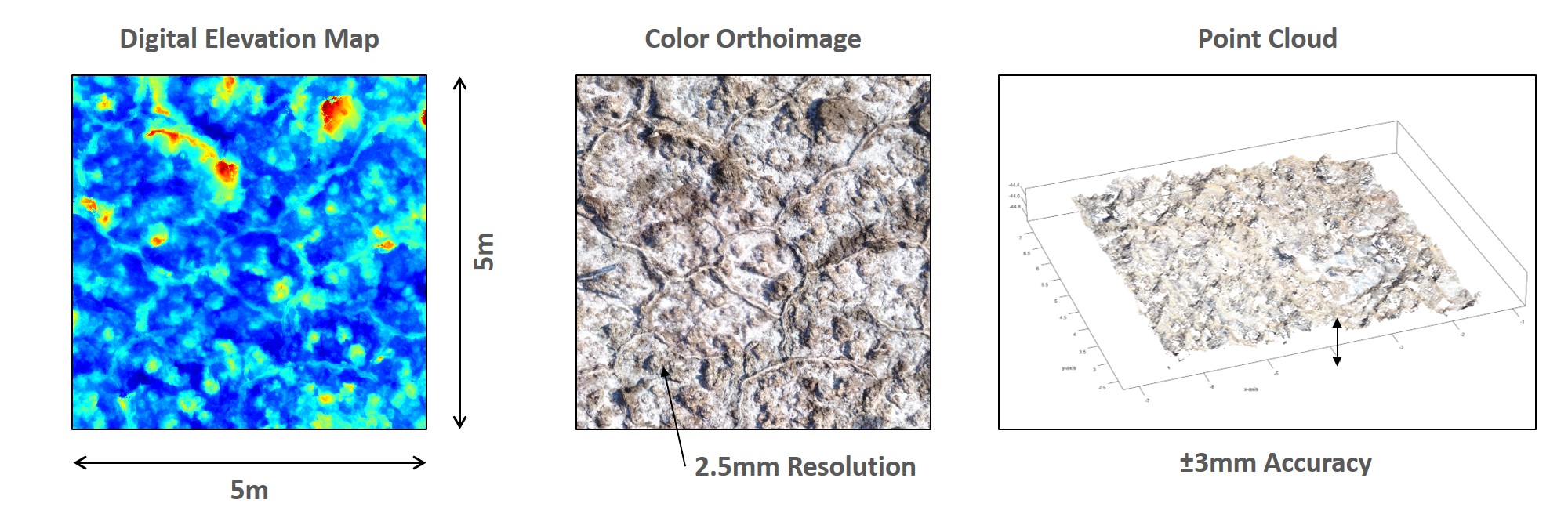


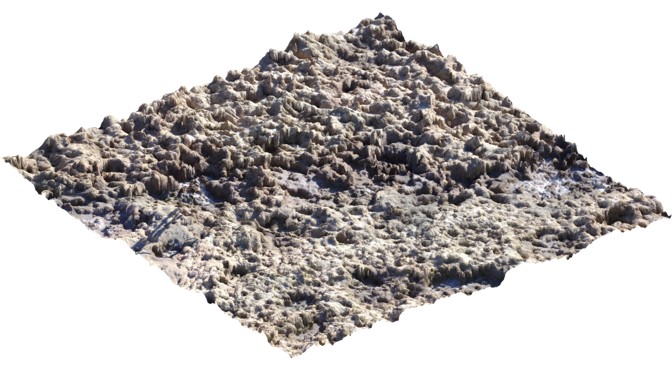
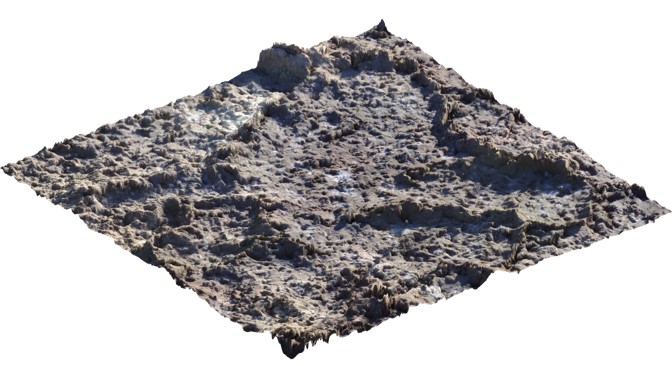
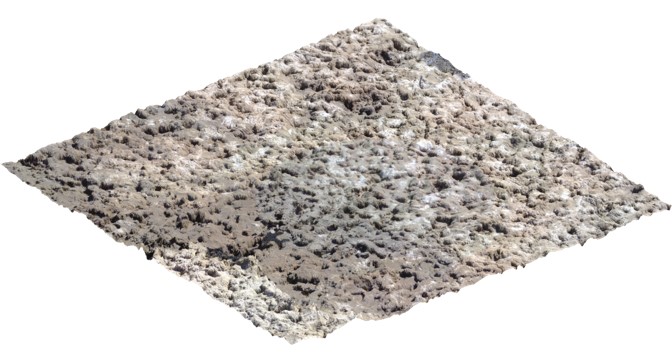
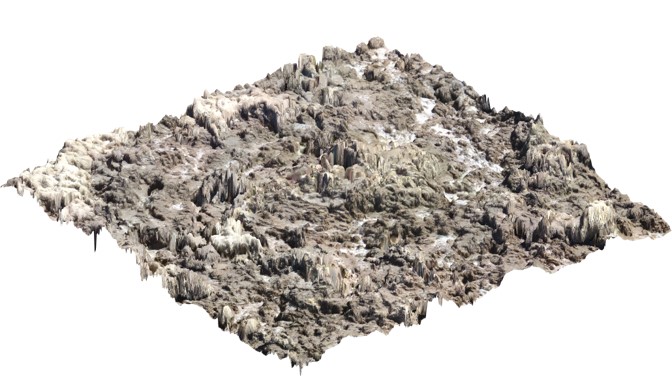
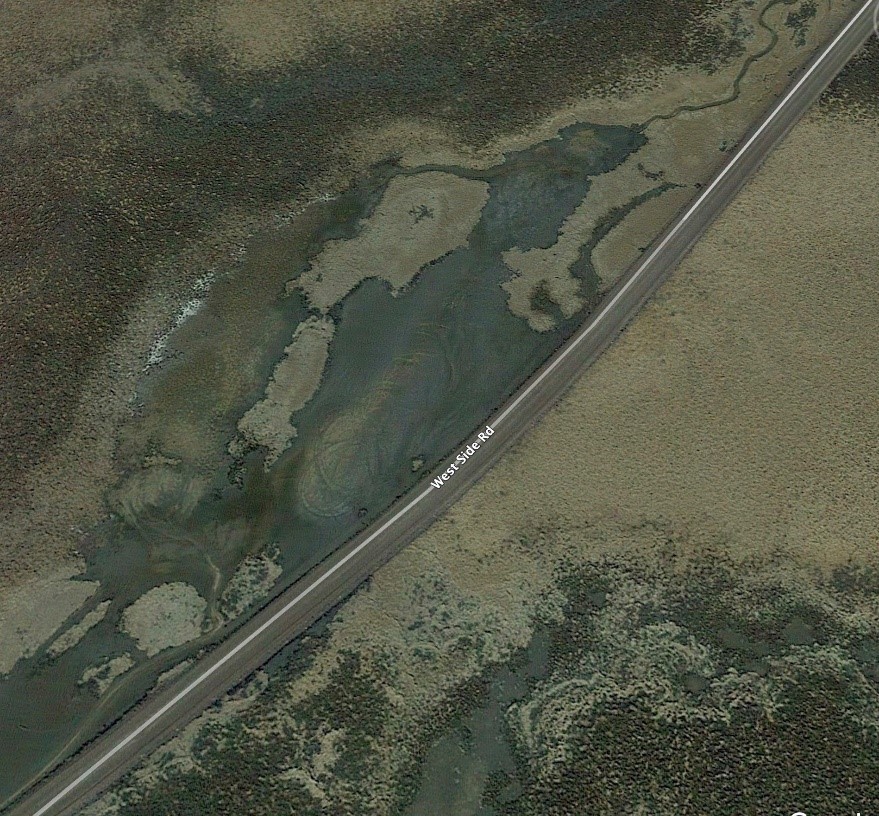 Description: This region is characterized by flat,
greyish-colored flat dry ponding zone with no relief, which we
call “Salacious Planitia” (SP). The region was selected
because the presence of the road (Westside Road, “WR”),
located on its southern border, influences the manner in which
freshly emplaced rain runoff ponds and, subsequently, the
character of emergent salt efflorescence to develop on either
side of WR. Four zones were selected surrounding SP maximizing
variety of textural appearance from this satellite imaging.
[Map data: Google, Maxar Technologies]
Description: This region is characterized by flat,
greyish-colored flat dry ponding zone with no relief, which we
call “Salacious Planitia” (SP). The region was selected
because the presence of the road (Westside Road, “WR”),
located on its southern border, influences the manner in which
freshly emplaced rain runoff ponds and, subsequently, the
character of emergent salt efflorescence to develop on either
side of WR. Four zones were selected surrounding SP maximizing
variety of textural appearance from this satellite imaging.
[Map data: Google, Maxar Technologies]
